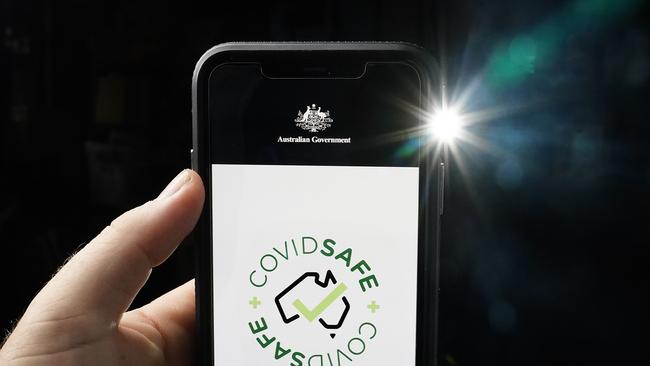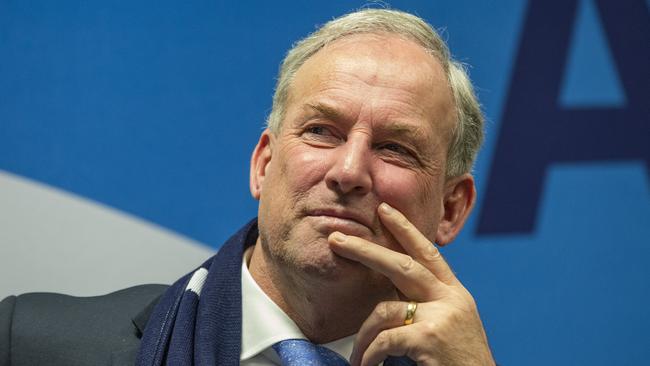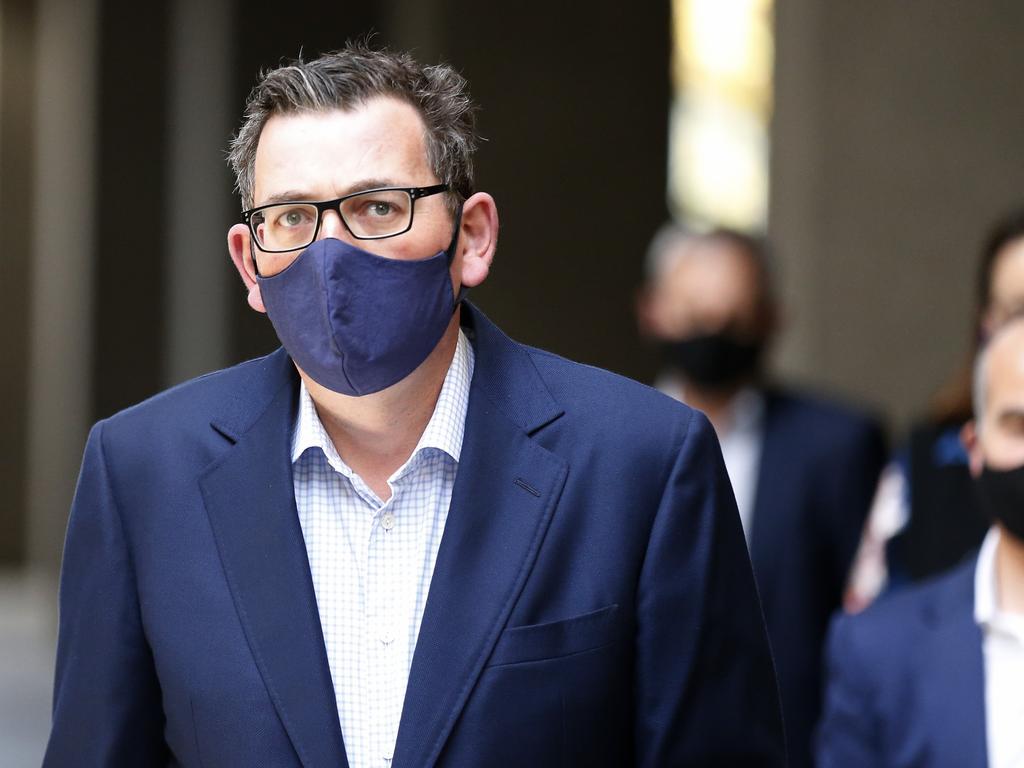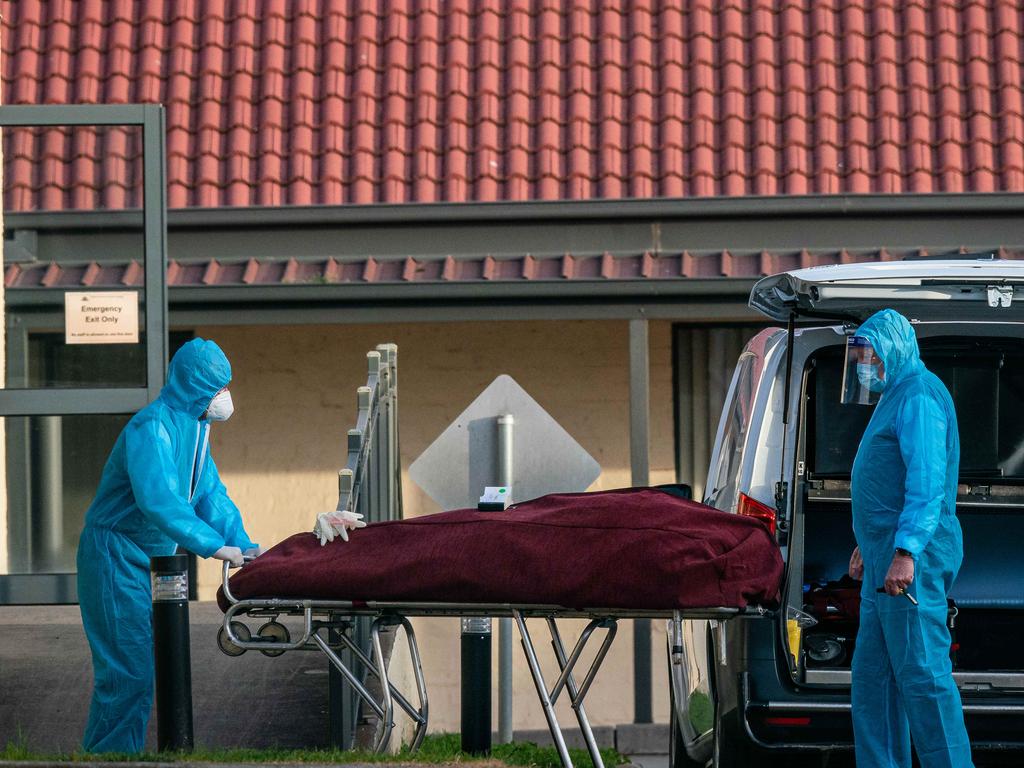Coronavirus: Victoria stopped using the COVID app before virus spike
Victoria’s health department stopped using the COVIDSafe app on the eve of the second wave because officials didn’t see it as useful.

The Victorian health department stopped using the Morrison government’s multimillion-dollar COVIDSafe app on the eve of the second wave because state officials didn’t see it as useful, an inquiry has heard, as 1186 cases across the state and 11 deaths were linked to aged care.
At a Senate committee scrutinising the government’s response to the pandemic on Tuesday it was heard it took five days for federal health officials to become aware that a staff member at St Basil’s nursing home – now at the centre of the Victorian outbreak – had become infected with coronavirus.
Of the 1186 cases attributed to the aged care sector on Tuesday, 136 were connected to St Basil’s.
Department of Health Secretary Brendan Murphy told the inquiry on Tuesday Victoria’s public health unit stopped using the COVIDSafe tracking app for a “period of time” amid a spike in cases because they felt so under pressure due to the magnitude of cases.
“(They) hadn’t found value in those early cases and they did stop using it for a while we believe, but they have been very clear that they are committed to using it at the moment,” Dr Murphy said.
The former Chief Health Officer said he believed the initial low download rate coupled with the fact the bulk of early transmission was within family groups had informed Victoria’s decision not use the app more widely.
“They have now started using the app again and we hope to see some of the successes we’ve seen in NSW recently with identifying otherwise identified contacts,” he said.
Pressed about the revelation later on Tuesday Deputy Chief Medical Officer Nick Coatsworth said the COVIDSafe app provided an extra layer of protection and it should be integrated into the workflow of public health officials to assist in contact tracing.
“COVIDSafe actually was being used at the beginning of their second outbreak, Brett Sutton has been very clear about that,” Dr Coatsworth said. “It is the case that in the intervening period it stopped being used.”

He said he did not know for how long Victoria ceased using the app but the tool was clearly having an “important effect” in NSW when it came to tracing contacts.
A NSW Health spokeswoman told The Australian that as of lunchtime on Tuesday COVIDSafe data had been accessed 33 times, leading to an additional 14 close contacts being identified who had not been spotted through manual contact tracing.
A spokesman for Communication Minister Stuart Robert said the app had bolstered efforts to trace previously unknown close contacts, resulting in the identification of 544 people connected to a Sydney outbreak.
Two of which were subsequently confirmed to have COVID-19.
The Senate inquiry heard that while a St Basil’s employee told management they were infected with the virus on July 9, it wasn’t until July 14 that the state government informed its federal counterparts.
“The board chair became aware on the ninth but didn’t raise it with Commonwealth,” Professor Murphy said.
The communication delay was in contravention of coronavirus protocols that stipulate aged care homes must notify the federal authorities, as well as the state public health unit, within 30 minutes of learning of an infection.
St Basil’s management has previously suggested state authorities were notified on July 9.
Aged Care Minister Richard Colbeck conceded care and communication standards had not been met at St Basil’s.
“There’s no point in me trying to pretend that it all did go as well as it should have done, because it didn’t,” he said.
He later drew the ire of Greens’ Senator Rachel Siewart after he suggested it was appropriate for some aged care providers to keep active coronavirus cases secret from the public on the proviso that families had been notified.
“I’m reluctant to have a public hit list of facilities that have been unfortunate enough to have an outbreak of COVID,” he said.
The inquiry heard that the number of those that had completed the training had since risen to 100,000, representing just one-in-three aged care workers.







To join the conversation, please log in. Don't have an account? Register
Join the conversation, you are commenting as Logout